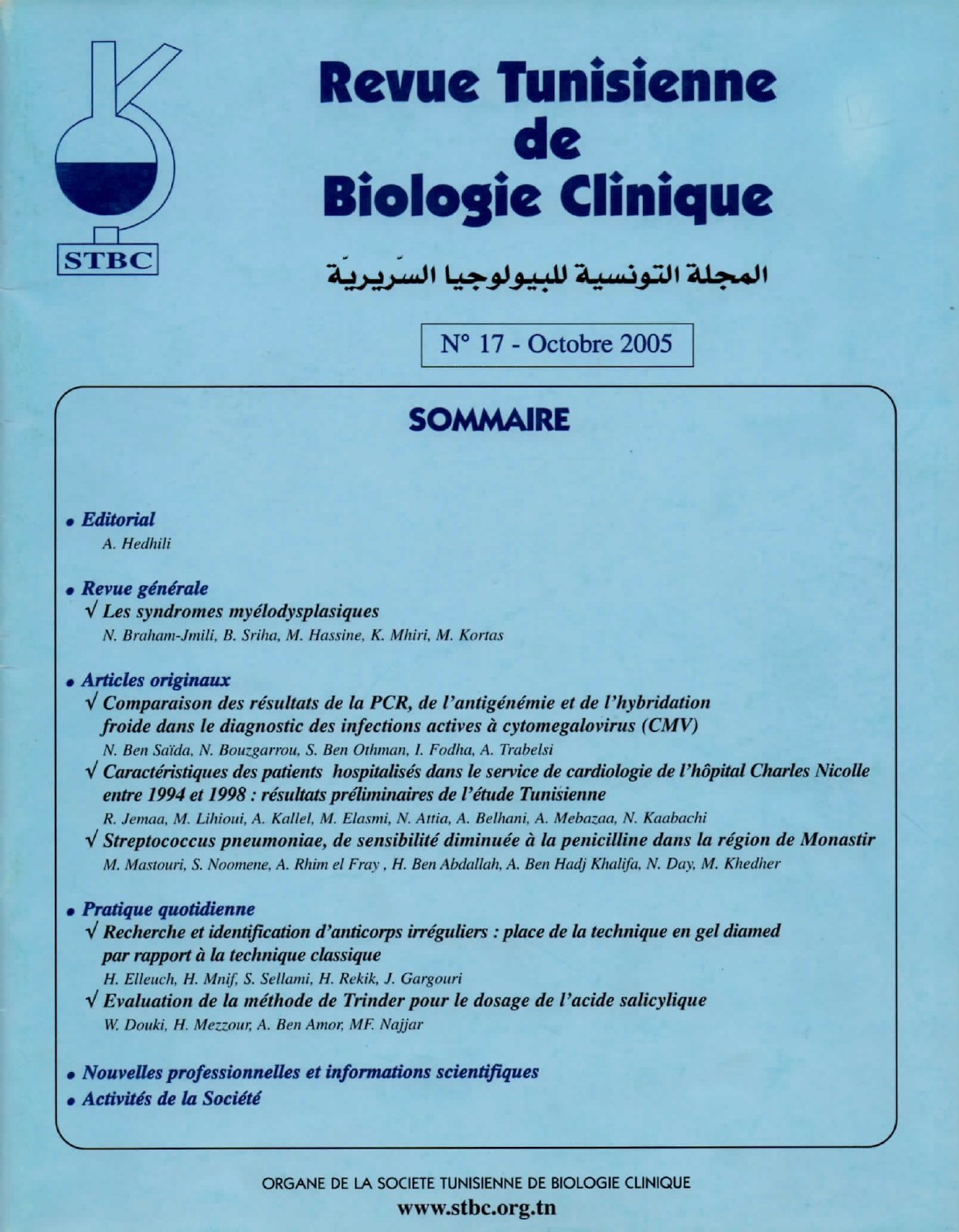Abstract
In spite of the emergence of new techniques of salicylates determination, based on modern technologies, the Trinder method remains one of the simplest and most rapid. In this work, we assessed the fundamental analytic performances of this method in order to study its reliability. We worked on a pool of sera overloaded with salicylic acid for a final concentration of 2000 mg/l, from which we achieved a range of dilutions to 50,100, 200, 400, 500, 800, 1000, 1200 and 1500 mg/l. We adapted the Trinder method, that is based on colorimetric measure at 540 nm of the complex ferric chloride / salicylic acid, on spectrophotometer Hitachi U-2000. We applied the protocol of assessment recommended by the SFBC and the IFCC to establish the linearity and the precision profile, and to study the within run and between run precision, the accuracy (test of dilution and relationship with the SIGMA® colorimetric technique) and the interference of statements of the serum (bilirubin, hemolysis, turbidity), of 2 reducing substances (glucose, ascorbic acid) and iron. The method is linear from 3 mg/l (limit of detection) to 2000 mg/l (limit of linearity), with a precision profile validated in this domain. The precision, tested on 3 levels of concentration, is acceptable (repeatability: CV <2,74%; reproductibility : CV <6,67%). The accuracy regression line, obtained by the test of dilution has for equation: Y = 1,006 X - 2,231 (r = 1,0000). The correlation with the SIGMA® colorimetric method provided a coefficient r =0,9996. At last, we did not notice statistically significant interference of turbidity, bilirubin, hemolysis, glucose, ascorbic acid and iron. The analytic performances of this method testify to its reliability and allow it a large application in clinical toxicology.

This work is licensed under a Creative Commons Attribution 4.0 International License.
Copyright (c) 2005 Revue Tunisienne de BIOLOGIE CLINIQUE

